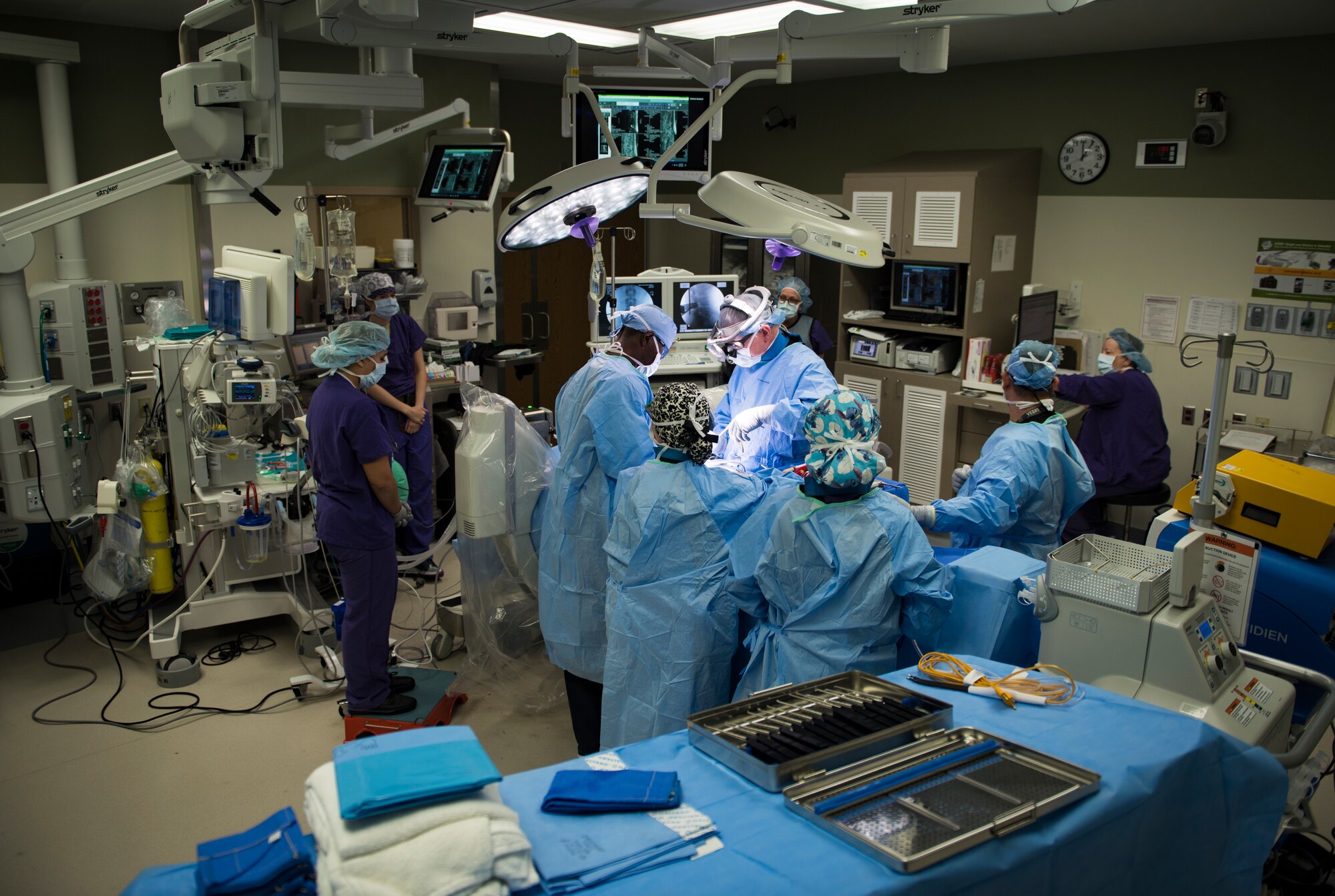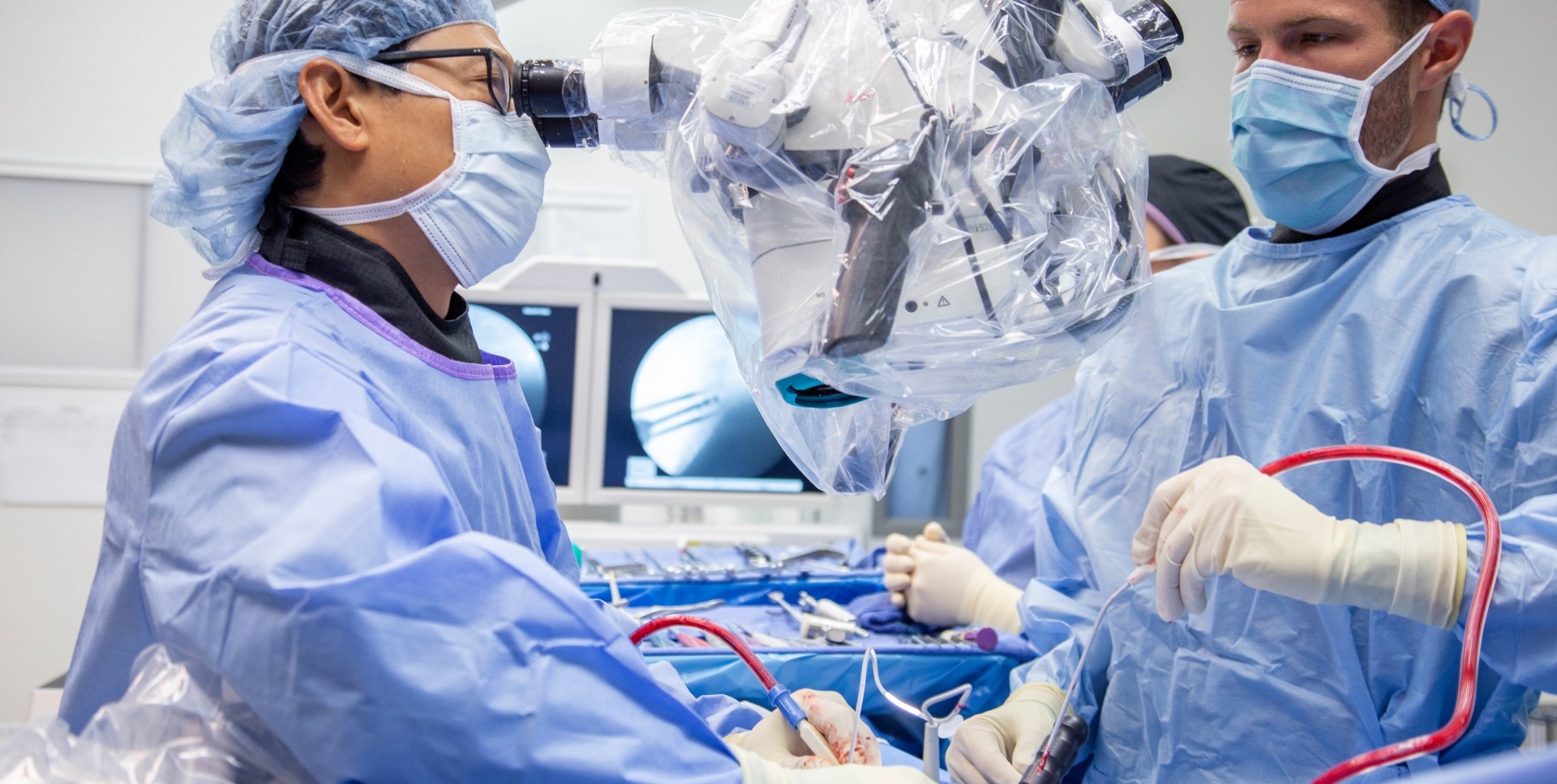The Most Recent Developments by the Best Spine Surgeons in St Louis MO
The Most Recent Developments by the Best Spine Surgeons in St Louis MO
Blog Article
What Spine Issues Commonly Bring About Surgical Procedures for Relief?
Back concerns that call for surgical treatment typically arise when conservative therapy options fall short to provide appropriate relief from persistent discomfort and practical problems. Conditions such as herniated discs, back constriction, and degenerative disc condition frequently lead to surgical treatments aimed at restoring and easing symptoms movement.

Herniated Discs
Herniated discs are an usual spine condition that frequently brings about medical treatment when conventional therapies fall short. This problem takes place when the soft inner gel of a back disc protrudes through a tear in the tougher external layer, possibly pressing neighboring nerves. Symptoms typically consist of localized discomfort, emitting pain in the limbs, and neurological shortages such as tingling or weakness.

Surgical procedure aims to minimize pain and bring back feature by removing the herniated part of the disc or maintaining the impacted spinal sector. While several patients experience significant improvement adhering to surgical procedure, it is important to weigh the advantages and risks in assessment with a certified spinal column professional. Inevitably, timely intervention is necessary to prevent further complications and enhance lifestyle for individuals enduring from this incapacitating problem.
Back Stenosis
Experiencing spinal constriction can significantly influence an individual's mobility and quality of life. This problem happens when the spine canal tightens, placing stress on the spine and nerves. Generally seen in the lumbar (lower back) and cervical (neck) regions, back constriction often arises from degenerative changes related to aging, such as arthritis, disc herniation, or thickening of ligaments.
Symptoms of back stenosis can vary, yet they typically consist of pain, tingling, tingling, and weakness in the extremities. These symptoms might aggravate with task or extended standing and often enhance with rest. In extreme cases, individuals might experience problems with balance and control, resulting in an increased risk of drops.
When conventional treatments, such as physical treatment, medicines, and lifestyle alterations, fall short to minimize signs, medical treatment might be thought about. Treatments like laminectomy or back fusion purpose to unwind the afflicted nerves and stabilize the spinal column. Early medical diagnosis and therapy are critical in taking care of back stenosis effectively and maintaining flexibility, eventually improving the individual's general lifestyle.
Spondylolisthesis
Spondylolisthesis occurs when one vertebra slips onward over the one below it, potentially bring about spine instability and nerve compression. This problem can develop from various factors, consisting of congenital flaws, degenerative changes, trauma, or repeated anxiety injuries. Signs frequently include reduced pain in the back, tightness, and radiating discomfort in the legs, which can significantly affect daily tasks and general top quality of life.
Diagnosis commonly involves a comprehensive professional examination, imaging researches such as X-rays or MRI, and analysis of neurological feature. The level of slippage is classified into grades, with higher qualities suggesting extra serious displacement and a higher chance of surgical treatment.

Early diagnosis and appropriate click over here management are essential in preventing further difficulties and boosting individual outcomes. As spondylolisthesis can bring about persistent pain and special needs, timely treatment is essential for recovering spine wellness.
Degenerative Disc Illness
Degenerative Disc Condition (DDD) is a condition identified by the gradual damage of the intervertebral discs, which work as important shock absorbers between the vertebrae of the spinal column. As these discs shed hydration and flexibility in time, they become less effective at cushioning the vertebrae, leading to raised rubbing and anxiety on the spine structures.
Individuals with DDD often experience signs and symptoms such as chronic neck and back pain, rigidity, and lowered movement (best spine surgeons in st louis mo). The condition can likewise cause nerve compression if the degenerated discs bulge or herniate, leading to radicular discomfort, weakness, or tingling in the arm or legs
Treatment alternatives array from conventional procedures, including physical treatment and discomfort administration, to even more intrusive treatments when conventional procedures fail. Surgical treatments, such as spinal combination or fabricated disc replacement, may be suggested for individuals with substantial pain and practical problems.
Spine Lumps
Back lumps, which can be benign or deadly, stand for an additional considerable source of spine conditions that may require medical treatment (best spine surgeons in st louis mo). These lumps can come from within the spine (primary tumors) or metastasize from other components of the body (second lumps) Their presence can bring about numerous signs and symptoms, including localized discomfort, neurological shortages, and alterations in movement
Surgical therapy for spinal growths often intends to relieve symptoms by removing the growth, supporting the spine, and addressing any type of compressive effects on the spine or nerves. Signs for surgical procedure usually include substantial pain not responsive to conventional treatments, or neurological impairment resulting from the tumor's growth.

It is important for patients presenting with signs symptomatic of back tumors to undertake complete diagnostic examinations, including imaging studies and biopsies, to identify the appropriate strategy (best spine surgeons in st louis mo). Early discovery and intervention can dramatically improve client end results and quality of life
Final Thought
In recap, various spinal column concerns, consisting of herniated discs, spine stenosis, spondylolisthesis, degenerative disc disease, and spinal tumors, often require medical treatment when conservative treatments stop working to give relief. These problems bring about substantial discomfort and practical impairment, prompting the factor to consider of treatments such as discectomy, back fusion, and laminectomy. Ultimately, surgical alternatives goal to minimize discomfort, boost mobility, and bring back lifestyle for people influenced by these disabling spinal disorders.
Conditions such as herniated discs, spinal stenosis, and degenerative disc disease often lead to surgical procedures intended at minimizing symptoms and restoring wheelchair.Herniated discs are an usual back condition that often leads to surgical treatment when conservative treatments fall short. Surgical interventions, such as back blend or artificial disc substitute, might be shown for patients with substantial discomfort and functional impairment.Spine tumors, which can be malignant or benign, represent another significant cause of back conditions that may necessitate medical treatment.In summary, various check my blog spine concerns, consisting of herniated discs, back constriction, spondylolisthesis, degenerative disc condition, and spinal growths, frequently necessitate surgical treatment when conservative therapies stop working to provide alleviation.
Report this page